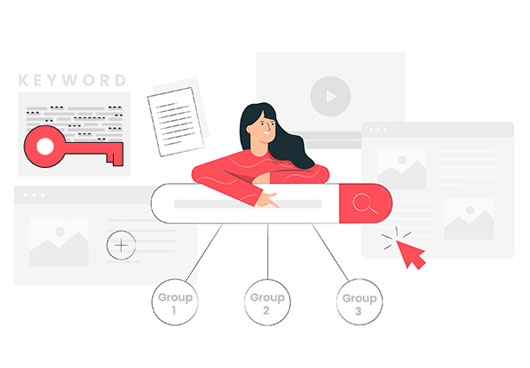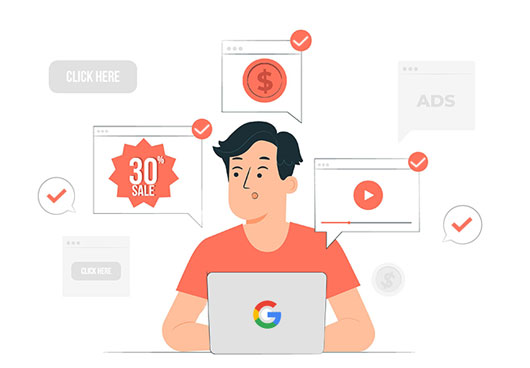How to create a successful blog post
Contributors:
Amol Ghemud
Published: August 14, 2018

Each blogger needs to resemble an expert online and it’s so natural to do when you know how.
When you are spic and span to blogging, it appears like everybody online talks about is about blogging and bloggers.
“Don’t be a writer; be writing.” by William Faulkner
1. Pick up topics and title For your blog post.
The title is the most important part of any piece of writing – whether it is an article, newsletter, sales copy, blog entry, web page, and email or business report. Without a good title there is a pretty good chance, rest will not be read.
“If you want your blog posts or copy to perform well, you have to create a magnetic headline.”– Neil Patel
By improving your titles you will find that your writing will no longer be ignored, dismissed or deleted as they will be hungry to find out more.
The titles is your first and sometimes only chance. Reader’s eyes will scan the title and an instant decision will be made. Does it interest them, intrigue them or amuse them or can it be ignored? There’s no second chance.
No appeal. Just one chance. There is no going back and the rest of your article, brilliant, amusing and informative though it may be will never be read.
If you are able to create a great title, battle is half won you can easily write the copy. While if you have poor headline no matter how great is your copy there are rare chances of it being read easily.
“A Poor Headline will render your article invisible”
2. What buyers think
Each blog you write should define and document the profile of their most important buyer segments. Outlining an ideal buyers profile is an indication of disciplined process which will help you to write the post smoothly going further. If you don’t have an ideal profile documented for your target buyers, do this immediately.
First Who ?
Consider buyers around your blog, and their audiences, for whom content is important.
3. Brainstorm topics – FAQ’s , Competitors
Conceptualizing new blog content thoughts can be a difficult request, particularly if your content plan depends on frequent content.
Now and again this may entice you to convey crummy substance just to meet a due date. Or, on the other hand, in different cases you may basically be out of thoughts and need another strategy to kick off your ideas.
In such situations try to brainstorm ideas which you can easily find on different forums, faqs section and other articles written around the same subject.
In either case, you generally need to ensure you’re conveying quality substance to your perusers.
4. Do Keyword Research
With all the buzz in the SEO world today about content and social signs, it is very difficult to ignore even smallest detail while building foundation of SEO: KEYWORD RESEARCH.
Keywords are like a compass for your SEO campaigns: they tell you where to go and whether or not you’re making progress.
Keyword Research is the first and foremost step to follow before beginning with your optimization mission. It is simply, researching and zeroing down on those words which, a user will probably search (in any given Search Engine), which directly (or indirectly) is related to your products or services.
5. Which keywords buyer persona use
Relevance is a very important factor to consider when picking the correct keywords for SEO. Why? Since the more specific you are, the better.
Each search is an individual’s’ needs & interests. Find out how your business would benefit you find search terms that are related to your business domain and customize content on your website to serve the actual needs of your customers.
6. Add relevant CTA
A good call to take action will go about as another valuable extension blog.
In the wake of examining the advantages of picking up blog subscribers, give links to relevant articles you’ve beforehand written on same story.
7. Promote offersUse CTA in blog post and in sidebarInsert CTA after first few para in hyperlink Include CTA at end of every post
Approach your readers to agree to accept a free demo of your service or product. Your call to action ought to never appear to be sudden, or you’ll battle to get the response you’d trusted.
8. Include long tail keyword in title
Most best brands are starting to see the potential in longer watchwords, particularly long tail phrases.
Focused keywords, like “Growth Hacks” might generate the most search traffic according to their ranking in the long list of keyword ideas. In any case, focusing on such keywords viably is taking away the best utilization of your web search engine juice.
On the other hand, the “best Growth Hacks for my business” may not have as many monthly searches, but because it’s longer than the focused keyword, you could more easily rank on a search engine for it and start generating more blog traffic and leads.
9. Send clear message in post title
Come to the heart of the matter with titles which generat action.
Always try to choose a kind of title which triggers some “activity”. Think of blockbuster movies with good titles. They make you want to watch it, right? With an this typeof title, you’re conveying your message directly, since title gives a compact outline of the entire blog’s primary message in one sentence.
10. Shortened title to less than 60 characters – may cut off in SERP
Google displays upto 60 characters in the SERPs pages and you need to craft your titles for the maximum benefit which includes getting click throughs.
Also If you have 100 – 150 characters then each word is diluted in strength (to a degree) and if it needs to be that long then your page isn’t as focused as it could be, you may be better off with 2 pages targeting different aspects of the keywords.
11. Format and optimise the post – so SE and people can read
The blog’s design can have a huge impact on the first impression of new visitors
12. White space is your friend
The proper use of white space can shape your blog design in different ways. For example, white space makes text on your blog more legible.
Design elements surrounded by white space reinforce those elements’ proximity to one another, attracting attention to that part of your blog.
13. Don’t write long para
Traditional Media – One idea per paragraph
Web Writing – One point about the idea per paragraph
On the web, people are not patient enough. If the paragraphs look like big blocks of hard-to-read text, edit the post to break them into shorter sections.
The general rule for web writing is to keep your paragraphs short.
14. Use numbers, list
By virtue of their formatting, numbered lists stand out from the regular text and are more likely to catch a reader’s attention. So, be sure to use the numbered list format only when the list format will add clarity to the text.
If the items on the list are not complex and the list itself does not warrant special attention, consider running the items into regular text.
15. Use section headers
A single post needs another heading structure than your blog’s homepage or your category archives.
The main purpose of categorizing your content with different headings so that your design become more user-friendly and people will get a notion about your website more easily by just reading the Sub-headings.
16. Bold important text
Is there anything more attention-grabbing than bold text? Writing an entire piece of content in bold would definitely be overkill, but using this tactic to highlight important sentences is a brilliant formatting technique.
Occasional bolded sentences have a place in the perfect blog post, and can improve the stickiness of your content marketing.
17. Include image to visually grab attention – related to content
Your blog posts should always include – at a minimum – one piece of visual content. Pick an image, infographic, embedded video, Slideshare or meme to catch the eye of your readers.
“In a desert of text, images are like water. Give your readers a sip!”
Be sure to support your graphs with text to get the most SEO credit possible for including fresh research and facts in your content.
18. Optimise for SE
After you finish writing, go back and optimize your post for search.
Don’t obsess over how many keywords to include. If there are opportunities to incorporate keywords you’re targeting, and it won’t impact reader experience, do it.
19. ALT tag
A commonly accepted best practice in the email world is the inclusion of alt attributes (frequently known as an “ALT tag” or “ALT text,” which is shorthand for alternative text) for images.
Search engine robots can’t read images without text, and there is a missed keyword opportunity.
Not labeling images is a poor user experience for those who have disabled images in their browsers.
20. Title
Most blogging software uses your post title as your page title, which is the most important on-page SEO element at your disposal.
21. Post Page URL
If you can make your URL shorter and more keyword-friendly, go for it. But don’t cram keywords or shoot for some arbitrary keyword density — Google’s smarter than that!
22. Description
Meta descriptions are the descriptions below the post’s page title on Google’s search results pages – they do give searchers a snapshot of what they will get by reading the post and can help improve your clickthrough rate from search.
23. Include relevant internal and external links
Internal links on a web page will help a viewer to stay engaged with your website longer. This may encourage them to become a customer or follower.
Adding trustworthy and informative external links to your pages will help improve the credibility of your website, whereas adding poor-quality links will hurt your site.
24. Promote your blog post
Getting views and shares involves a whole lot more than writing awesome content and putting it out there for people to see.
25. Add blog on your website
The first step would be to upload the blog on your website and make sure it appears the way you want it to be.
26.Add blog feed to relevant pages
A great way to boost blog traffic is either by offering partial feeds, or by customizing your feeds in such a way that you can include a note and link to your blog/article below the feed.
27. Link internally to blog posts
Have an old blog post that’s wildly popular? Go back and edit it — sneak in a link to your new post. This will help draw secondary traffic to the one you’re promoting, keep people on your website by offering them related content, and help the newer post gain visibility in search.
28. Share on Share on social media
Develop a social media strategy by focusing only on key social networks, engaging with influencers and top pages, and, interacting in groups to grow your social media reach.
Also make sure you constantly post updates, and regularly recycle old articles on social media; simply sharing your article once, or once in a while, won’t make any difference.
29. Use Social media share buttons in the blogs
Include social sharing buttons on blogs for increased number of social shares, exposure and traffic.
30. Reshare after few days
You can and should re-promote your blog post throughout the month following publication.
31. Promote blog through emails
Create an email that gives a brief overview of the new post and links back to it. Don’t give too much detail, but instead encourage readers to follow the link.
32. Analyse your blog post
The key to blogging success lies in identifying what’s working and doing more of it; once your blog starts to gain traction and get some readership, start paying special attention to your blog traffic to see what kind of content is getting the most views.
If you notice a trend with a certain type of content, do more of that type of content and you can be assured of increased traffic. One blog’s audience might really respond to insightful, informative long-form content.
Another blog’s audience might find long-form content a bore, preferring quick, to-the-point articles.
The same applies to most of the points – font, list posts, short paragraphs, etc.
Just because something is generally accepted by the blogging community, doesn’t make it true 100% of the time. Until you analyse how your audience responds to something, you won’t know with any certainty.
Try organizing and formatting your content in different ways, to get a clear picture of what your readers want. You can use a tool like Google Analytics to track metrics such as time on page and page reads to test what approach your audience prefers.
By doing deep analysis of your blogs after publishing and promoting it, will help you to determine which author, or topic gets maximum response. With the help of these insights you can quickly design a plan for your next blog post.
33. No of views on your blogs
It is important to keep an eye on what kind of blog gets most number of shares and engagement. It will help you to choose a theme for next blog.
Measure number of clicks on CTA you have put on the blogs. This will give you a clear metrics of conversion performance.
Don’t let your effort spent writing the perfect blog post go to waste by failing to format!
User experience matters in the age of content saturation, so honor your reader’s time by using subheaders, engaging images, visual content, varied text sizes and lists to keep them engaged and reading.
Do you format your blog posts before hitting publish? What are your favorite ways and techniques for making a successful piece of content marketing?
What else would you like to add ?
About the Author
Optimizer in Chief
Amol has helped catalyse business growth with his strategic & data-driven methodologies. With a decade of experience in the field of marketing, he has donned multiple hats, from channel optimization, data analytics and creative brand positioning to growth engineering and sales.
 Growth Strategy and Planning
Growth Strategy and Planning Inbound Growth
Inbound Growth Growth Hacking
Growth Hacking Search Engine Optimization
Search Engine Optimization Paid and Performance Marketing
Paid and Performance Marketing Social Media Marketing
Social Media Marketing AI-Driven Growth Strategy
AI-Driven Growth Strategy AI-Native Workflow Automation
AI-Native Workflow Automation Generative Engine Optimization
Generative Engine Optimization
 Tools
Tools Growth Tools
Growth Tools Offers
Offers Quizzes
Quizzes Blog
Blog Insights
Insights






















[…] and its image. The right terminologies and conciseness is everything content must comprise of. To write an awesome blog is an art in itself and it must be mastered before you put it into […]
With thanks! Valuable information!